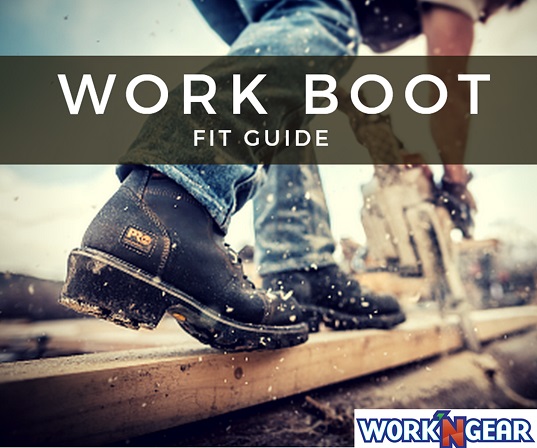You must have Cookies enabled for the best experience on our site and to make a purchase.
We make it easy for you

In any job where work boots are part of your uniform, getting the perfect fit is essential. The consequences of wearing an ill-fitting work boot day in and day out can be near catastrophic to your health: we’re talking back pain, foot pain, ankle pain, knee pain and more! Instead of risking your health and wellbeing in a cheap and ill-fitting work boot, make sure your boots are perfectly fitted from the start. Here’s how to find your perfect fit:
1. Begin with the right socks. We recommend wearing Socks because they are designed to reduce bulk, improve circulation and allow your foot to breathe, unlike moisture-absorbing cotton socks.
2. Always try on both boots at the same time. If there is anything keeping your feet from moving freely (like if the boots are tied together at the laces) then untie them so your legs can move independently and you can walk at a natural stride.
3. While your boots are on, try walking, hopping, doing knee raises, standing in place, and sprinting (just try not to knock over store employees as you do so). If you’re trying the boots on in the comfort of your own home, you’ll have an easier time of testing the boots out without feeling silly.
4. When you walk:
5. Slowly roll your ankle and stand on the sides of your feet to test the boot’s ankle support.
6. Check that the tongue, interior stitching and any other pieces of the boot do not chafe or dig into your foot.
7. Pull your feet out of your boots to check for red spots. Red spots indicate places where the boot has been rubbing or chafing against your feet and may point to potential issues in the future where rubbing can get worse and blisters can appear.
8. Once you find a pair of well-fitting work boots, lace them up in a Heel Lock pattern to keep your feet extra secure and help prevent blisters. This special boot lacing pattern relieves pressure on the front of your foot while making sure your heel stays in place and your ankle is properly supported. It can also be used on running shoes and hiking boots to prevent similar issues from happening.
1. If you have wide feet, do not try to fit your foot into a boot that is too narrow for your foot. You should also not try to size up in regular boot sizes, because even if larger boots fit the width of your foot, the boot will be too long and will cause blisters, chafing and heel slippage. Instead, try on boots that naturally come in wide sizes like Chippewa, Rocky and Wolverine.
2. If your feet are two different sizes, you can choose to buy two pairs of boots in the sizes you need, or buy a pair of boots to fit your larger foot, and use a heel insert in the shoe for your smaller foot.